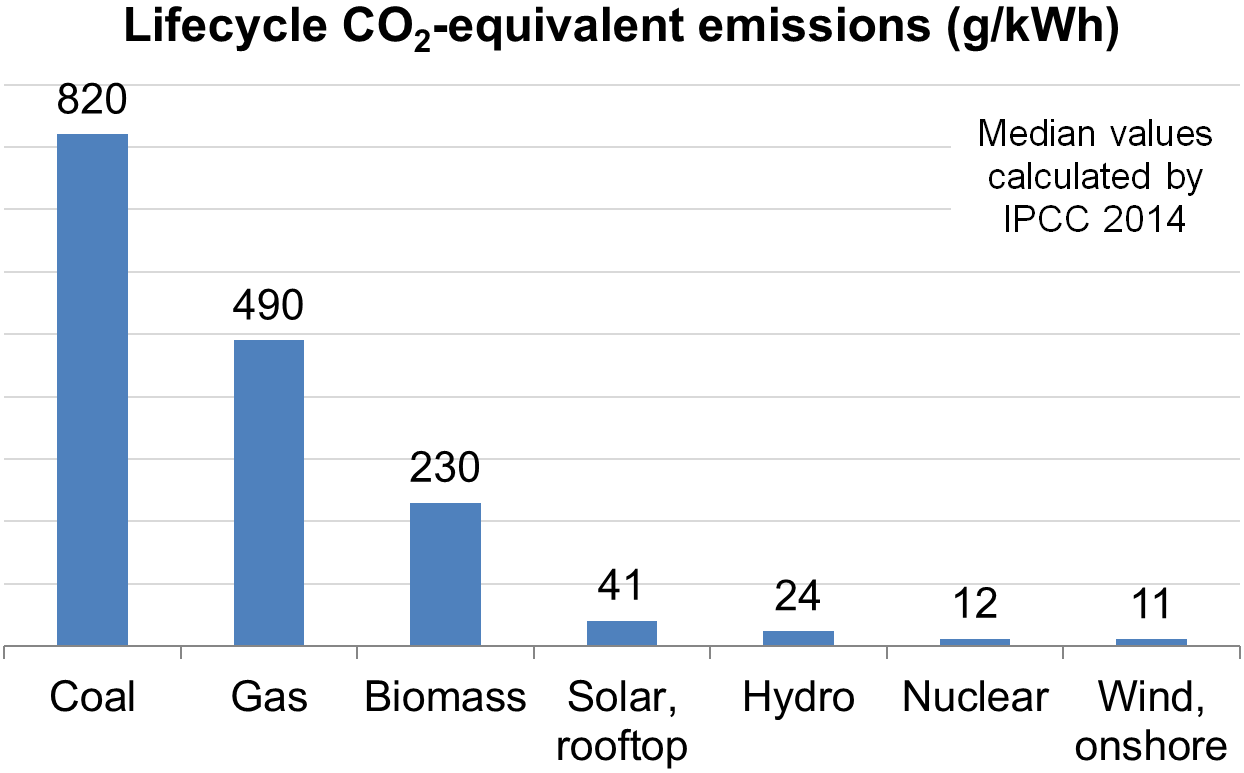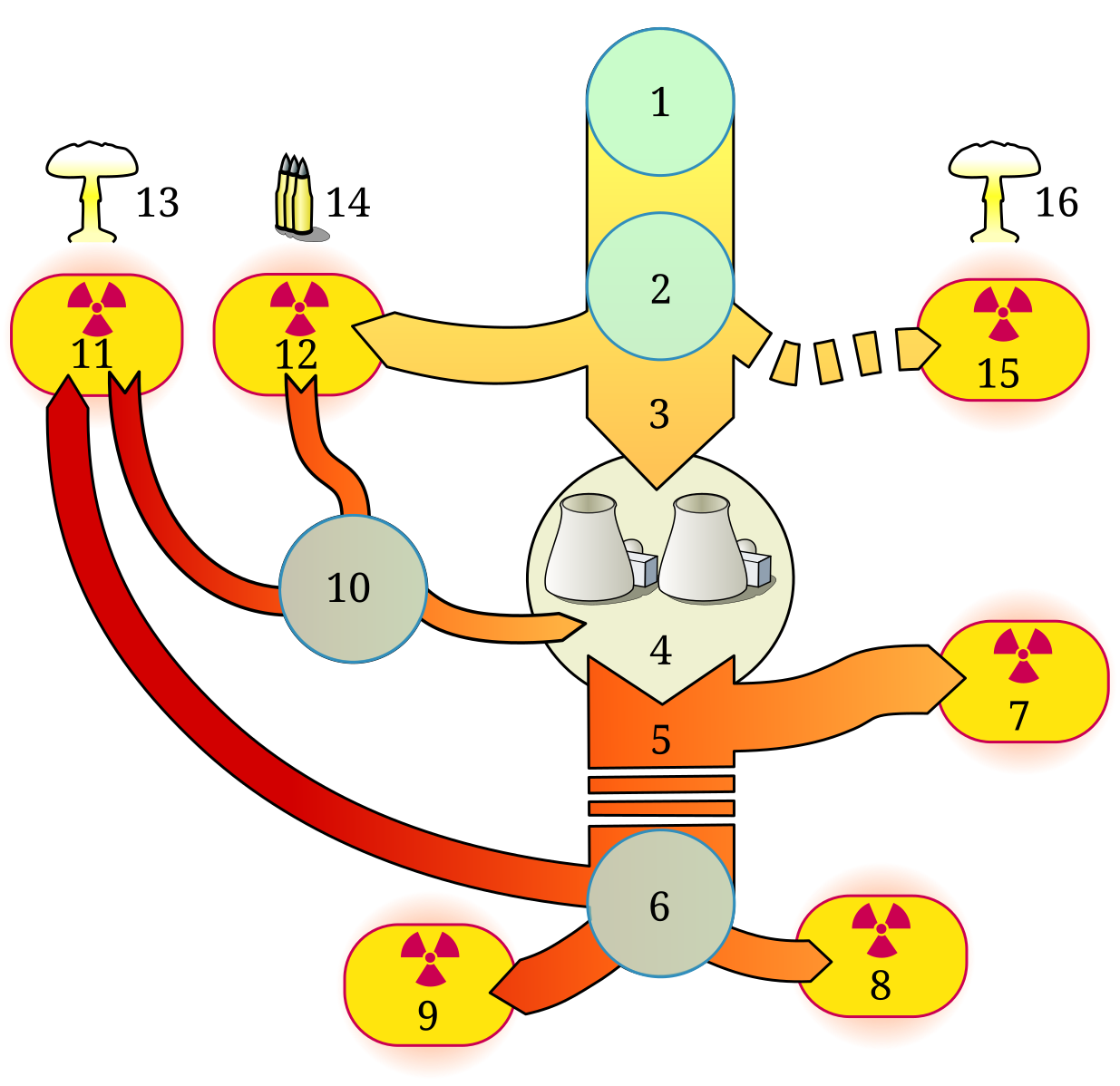IB Syllabus focus:
‘Compare fossil, nuclear, solar and another renewable for sustainability. Both renewable and non-renewable systems have extraction, construction, operation and end-of-life environmental costs.’
Understanding the sustainability and life-cycle impacts of different energy sources is vital in Environmental Systems and Societies. Energy choices shape environmental health, economic systems, and social stability worldwide.
Life-Cycle Thinking in Energy Systems
A life-cycle approach evaluates environmental, economic, and social impacts from extraction to disposal. This helps compare energy sources more realistically.

Bar chart of life-cycle CO₂-equivalent emissions (g/kWh) for electricity sources, based on IPCC-harmonised medians. It visualises that coal and gas are much higher than wind, nuclear and solar even when full life cycles are considered. This image focuses on emissions and does not depict other impacts (e.g., land, water, toxicity). Source.
Life-cycle analysis (LCA): A systematic assessment of the environmental effects associated with all stages of a product’s life, from resource extraction to final disposal.
Energy sources are not equally sustainable. Even renewables involve materials, land, and technology, while non-renewables carry depletion and pollution risks.
Fossil Fuels: Oil, Coal, and Natural Gas
Extraction and Construction
Extraction involves mining and drilling, causing habitat destruction, pollution, and greenhouse gas emissions.
Infrastructure such as pipelines and refineries further increases environmental costs.
Operation
Fossil fuels emit large amounts of carbon dioxide (CO₂) and other greenhouse gases, driving climate change.
Air pollutants such as sulphur dioxide contribute to acid rain and health issues.
End-of-Life
Combustion produces long-term atmospheric pollutants, with no true waste transformation.
Abandoned mines and oil wells leak methane and toxic chemicals.
Sustainability Evaluation
Fossil fuels are non-renewable: their finite reserves mean inevitable depletion.
They undermine long-term sustainability by fuelling global warming.
Nuclear Power
Extraction and Construction
Uranium mining disrupts ecosystems and generates radioactive waste.
Nuclear plants require high initial investment and long construction times.
Operation
Produces low-carbon electricity, making it attractive for reducing CO₂ emissions.
Generates radioactive waste requiring secure storage for thousands of years.

Diagram of the nuclear fuel cycle, showing uranium mining and milling, conversion and enrichment, fuel fabrication, reactor operation, and spent-fuel routes to reprocessing or final disposal. This schematic emphasises life-cycle stages and waste pathways but does not quantify impacts such as radiation exposure or water use. Source.
End-of-Life
Decommissioning plants is complex, expensive, and hazardous.
Storage solutions for high-level radioactive waste remain unresolved.
Sustainability Evaluation
Nuclear is low-carbon but carries long-term waste risks.
Its sustainability depends on technological innovation in waste management.
Solar Power
Extraction and Construction
Solar panels require rare materials such as silicon, silver, and cadmium.
Manufacturing is energy-intensive, often powered by fossil fuels.
Operation
Provides clean, renewable electricity with no direct emissions.
Performance depends on geographic location and sunlight availability.
End-of-Life
Panels have a limited lifespan (20–30 years).
Recycling systems are still developing; toxic metals can leak if not properly managed.
Sustainability Evaluation
Solar is highly renewable and scalable but dependent on rare materials.
Long-term sustainability requires circular recycling and cleaner manufacturing processes.
Wind Power
Extraction and Construction
Wind turbines need steel, concrete, and rare earth metals.
Manufacturing and transport generate emissions but less than fossil fuels.
Operation
Produces zero-emission electricity once installed.
Intermittent supply means reliance on energy storage systems.
End-of-Life
Blades are difficult to recycle, often ending up in landfills.
Decommissioned turbines create waste management challenges.
Sustainability Evaluation
Wind power is among the most sustainable options if paired with storage.
Challenges remain in material use and waste management.
Cross-Comparisons of Sustainability
Greenhouse Gas Emissions
Fossil fuels: Extremely high during operation.
Nuclear: Very low but with radioactive risks.
Solar and wind: Very low once installed.
Resource Use
Fossil fuels: Depend on finite reserves.
Nuclear: Uranium reserves are finite, but efficient fuel cycles extend life.
Solar and wind: Renewable, but constrained by material supply chains.
Waste and Pollution
Fossil fuels: Produce continuous air pollutants.
Nuclear: Produce dangerous radioactive waste.
Solar and wind: Waste mainly at end-of-life, with recycling potential.
Sustainability Principles Applied
The precautionary principle suggests limiting fossil fuel use due to irreversible harm. Renewables support intergenerational equity, ensuring resources for future generations.
Sustainability: The use of resources in ways that meet current needs without compromising the ability of future generations to meet their own needs.
Both renewable and non-renewable systems highlight trade-offs. Extraction, construction, operation, and disposal phases must all be evaluated to fully understand sustainability impacts.
FAQ
The life-cycle impact of an energy source depends on multiple stages: extraction of raw materials, construction of infrastructure, operation of the system, and end-of-life disposal.
Key influences include:
Energy intensity of manufacturing processes
Type and scarcity of raw materials used
Greenhouse gas emissions during operation
Waste management and recyclability of components
Even renewables, though low in emissions during use, can have significant impacts if materials are scarce or disposal systems are underdeveloped.
Renewable technologies like solar panels and wind turbines use materials such as cadmium, silicon, and rare earth metals. Without recycling, these can end up in landfills, creating pollution risks.
Recycling reduces demand for new extraction, lowers emissions from mining, and supports a more circular economy. It also enhances sustainability by extending the availability of critical raw materials.
The effectiveness of renewables varies with geography. Solar panels perform best in regions with high sunlight, while wind turbines depend on steady wind conditions.
Geographic suitability reduces the need for backup energy systems, which can otherwise increase costs and environmental impacts. Poorly located systems may have a larger life-cycle footprint due to inefficiency.
Technological innovations can reduce nuclear waste and improve fuel efficiency. For example, breeder reactors extend fuel use, while advances in storage aim to improve long-term safety.
Improvements in reactor design also reduce accident risks and increase overall energy efficiency, making nuclear more sustainable. However, these technologies remain costly and politically sensitive.
Life-cycle assessments (LCAs) provide a full picture of environmental costs across different energy sources. By comparing emissions, resource use, and waste, policymakers can prioritise sustainable options.
LCAs also reveal hidden impacts, such as mining for solar panels or waste from nuclear power, helping governments balance short-term energy demand with long-term sustainability.
Practice Questions
Question 1 (2 marks)
State one environmental advantage and one environmental disadvantage of using nuclear power compared to fossil fuels.
Mark Scheme:
1 mark for correctly identifying an environmental advantage (e.g., lower greenhouse gas emissions, reduced contribution to climate change).
1 mark for correctly identifying an environmental disadvantage (e.g., production of radioactive waste, risk of contamination).
Question 2 (5 marks)
Using examples, explain how the life-cycle impacts of solar and wind energy differ from those of fossil fuels in terms of sustainability.
Mark Scheme:
1 mark for stating that fossil fuels are non-renewable and produce high greenhouse gas emissions during operation.
1 mark for recognising that solar/wind are renewable with low emissions during operation.
1 mark for describing extraction/construction impacts of solar or wind (e.g., use of rare earth metals, energy-intensive manufacturing).
1 mark for describing operation/end-of-life issues for solar or wind (e.g., recycling challenges for solar panels or turbine blades).
1 mark for clear comparison highlighting sustainability trade-offs (e.g., fossil fuels cause continuous pollution vs. solar/wind impacts mainly at construction and disposal stages).

